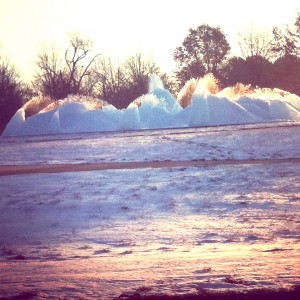There is a chill in the air. A feeling that things are starting to slow down in anticipation of the winter that is to come. Leaves are falling, squirrels are busy preparing for winter, and it stays darker longer in the morning. Hibernating animals such as ground squirrels, marmots, prairie dogs, dormouse, and hamsters are getting ready to suppress their metabolic rate, which is their survival mechanism, for winter. (How do you survive or thrive in the winter?)
Fall triggers a slowing of growth. For Concrete Raising Systems, fall is a great time for us to remind you to make sure your driveway, sidewalk, or concrete patio is ready for the winter snow and its ensuing melt. Water from melting snow can cause extensive water damage to the foundation of your home. If your driveway has sunken between the top of the driveway and the lip of your garage, water is directed to pool, run and accumulate by your foundation, compromising it and possibly making your basement walls wet with snow melt.
You can Repair Your Concrete Until the Ground is Frozen

Foam leveling work can be done until the ground freezes, and there is still time to lift your driveway before winter!
Mud jacking with polyurethane foam (foam jacking) is the better way to solve the problem that our Midwestern weather has created. Polyurethane foam expands into the cavity of the void, filling all gaps and hardening within minutes. The best feature foam has that the typical water, cement, and dirt mud jacking doesn’t have is that it is impervious to the elements! Think about it. If typical mud jacking uses water, dirt, and cement as the filler for the void, what happens when drier weather also dries out the water in the filler? The concrete sinks again! Foam does not shrink; it is not affected by water, cold, or heat. You lift it once with foam, and you are done! 30% of Concrete Raising Systems’ work in 2013 was first attempted with traditional mudjacking methods.
Hibernating animals are getting ready for the long, cold winter. Our community is getting ready to settle in for a lot of snow this season (according to the Farmer’s Almanac). However, Concrete Raising Systems is still working on getting your driveway, garage, sidewalk, or concrete patio raised and level before the ground is frozen!
This article was first published in October 2013 and has been recently updated.

Wow, thanks for the advice. http://www.sealtiteinsulation.com/
It helped when you mentioned that due to the compaction of the ground underneath, concrete slabs may sink. My uncle mentioned to me last night that he plans to hire a concrete lifting as their driveway needs repair and asked if I have any idea what is the best option to do. Thanks to this informative article and I’ll be sure to tell him that it will be much better if he consults a trusted concrete lifting service as they can answer all his inquiries.
I like when you said that water from melting snow can cause extensive water damage to the foundation of your home. We just built our garage 2 years ago. I notice that the floor is drowning down. I think I will be needing Concrete Lifting Contractor before it sinks down completely.